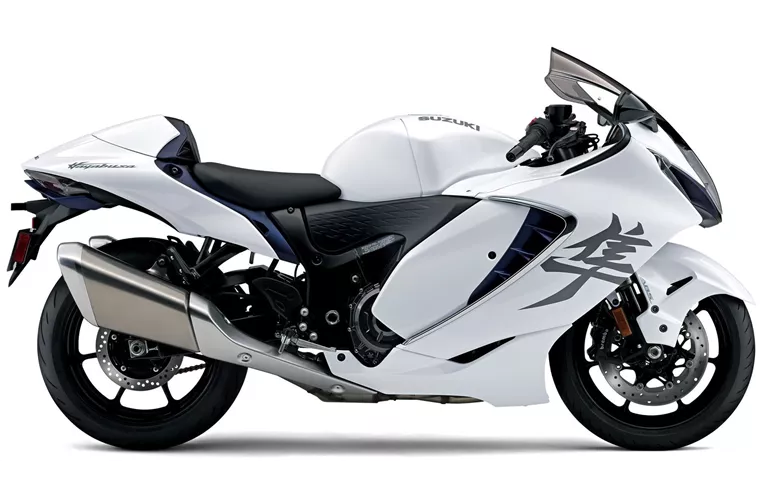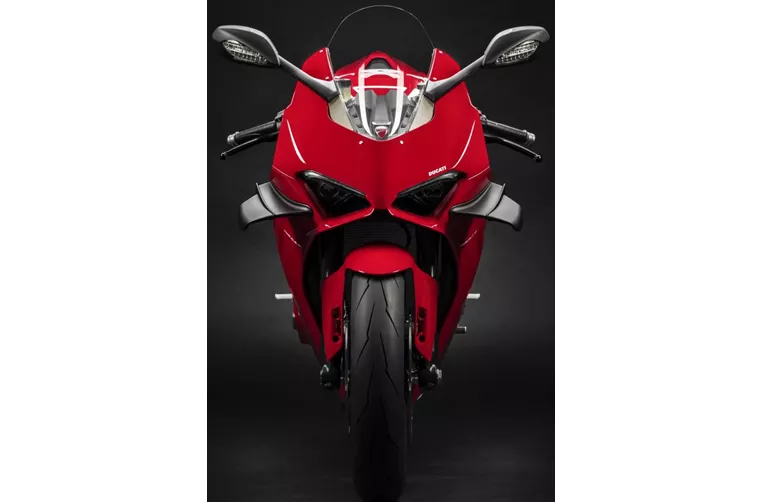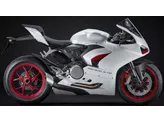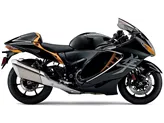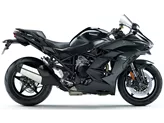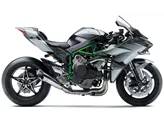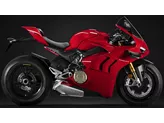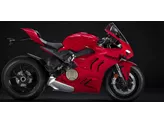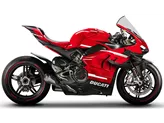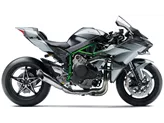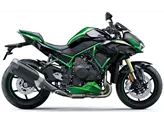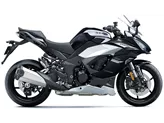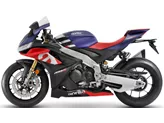Suzuki GSX 1300 R Hayabusa 2022 vs. Ducati Panigale V4 2020
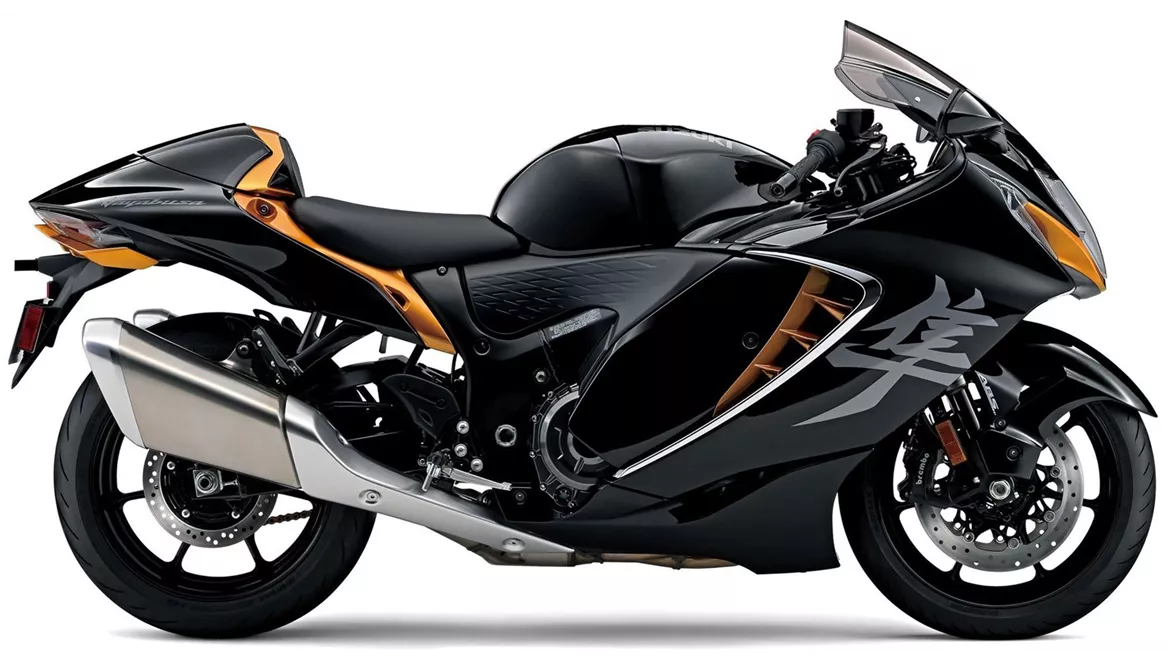
Suzuki GSX 1300 R Hayabusa 2022
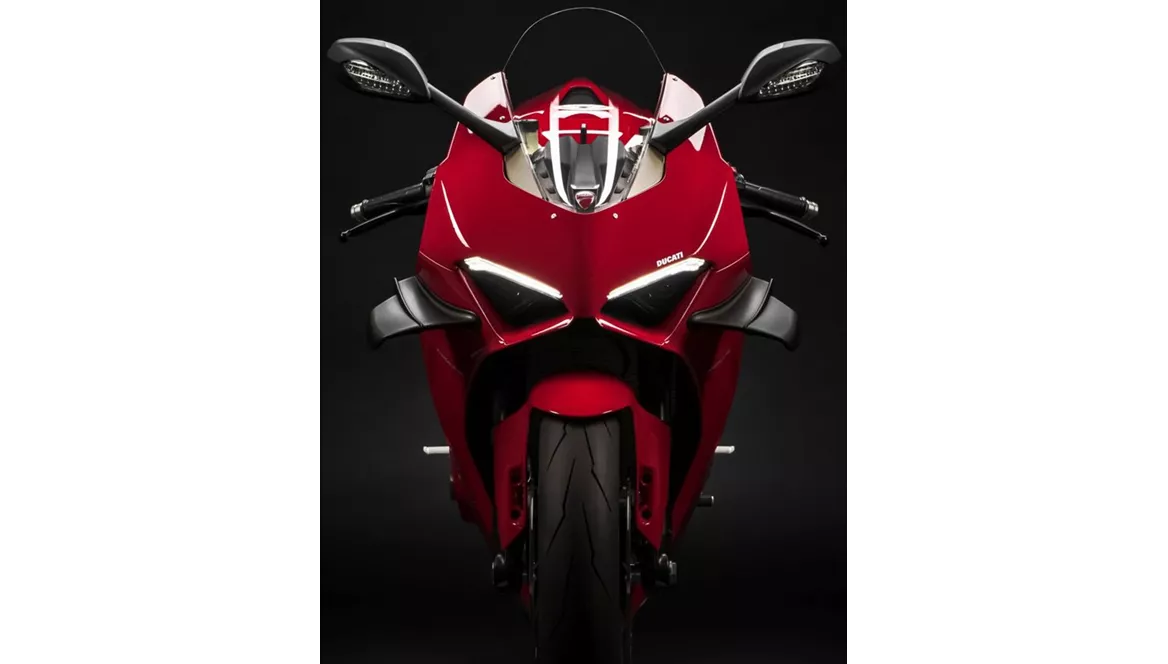
Ducati Panigale V4 2020
Overview - Suzuki GSX 1300 R Hayabusa 2022 vs Ducati Panigale V4 2020
The Suzuki GSX 1300 R Hayabusa 2022 and the Ducati Panigale V4 2020 are both powerful supersport motorcycles, but they have some key differences in terms of their technical specifications and strengths.
Starting with the engine and drive train, the Hayabusa 2022 features an in-line 4-cylinder engine with a displacement of 1340cc, producing 190 horsepower and 150 Nm of torque. On the other hand, the Panigale V4 2020 has a V4 engine with a displacement of 1103cc, delivering a higher power output of 214 horsepower and 124 Nm of torque. Both bikes have a DOHC valve configuration, but the Panigale V4 utilizes Desmodromic valves, which are unique to Ducati.
In terms of suspension, both motorcycles have upside-down telescopic forks at the front. The Hayabusa 2022 is equipped with Kayaba suspension components, while the Panigale V4 2020 features Showa forks. Both bikes offer adjustable compression, preload, and rebound settings for the front suspension. At the rear, the Hayabusa 2022 has a swing arm suspension with a Kayaba monoshock, while the Panigale V4 2020 has a single swing arm suspension with a Sachs monoshock. The rear suspensions also offer adjustable compression, preload, and rebound settings.
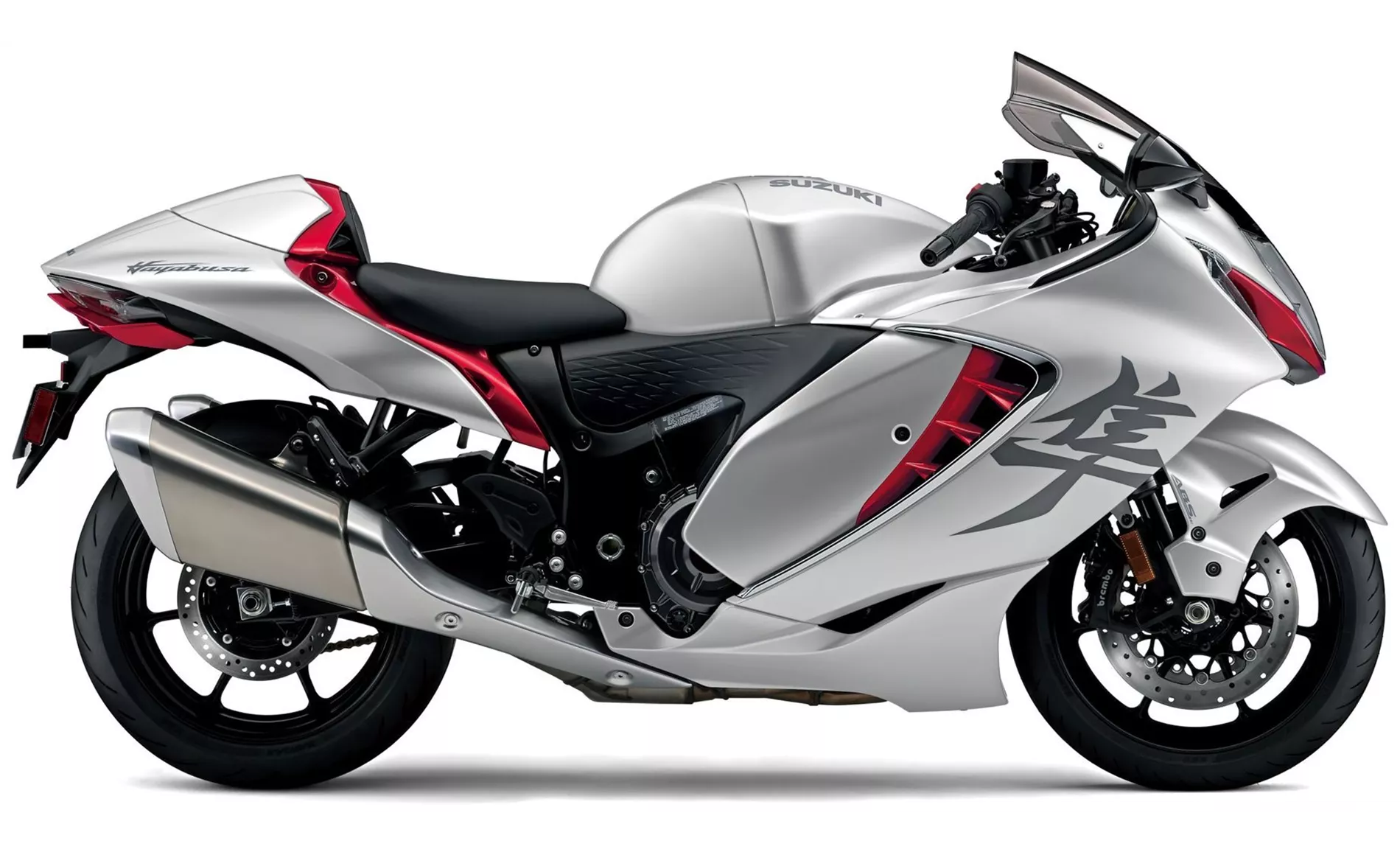
Suzuki GSX 1300 R Hayabusa 2022
Both motorcycles have aluminum frames, but with different frame types. The Hayabusa 2022 has a twin-spar frame, while the Panigale V4 2020 features a monocoque frame. The rake and trail measurements also differ, with the Hayabusa 2022 having a rake of 23 degrees and a trail of 90 mm, while the Panigale V4 2020 has a rake of 65.5 degrees and a trail of 100 mm.
In terms of braking, both bikes have double disk brakes at the front, with Brembo being the brand of choice for both. The Hayabusa 2022 has 320 mm diameter front disks, while the Panigale V4 2020 has slightly larger 330 mm diameter front disks.
When it comes to advanced rider assistance systems, the Hayabusa 2022 offers a comprehensive package. It includes ABS, anti-rollover control, hill start assist, riding modes, combined brake system, cornering ABS, launch control, ride by wire, shift assistant with blipper, cruise control, traction control, and anti-wheelie. On the other hand, the Panigale V4 2020 only offers ABS.
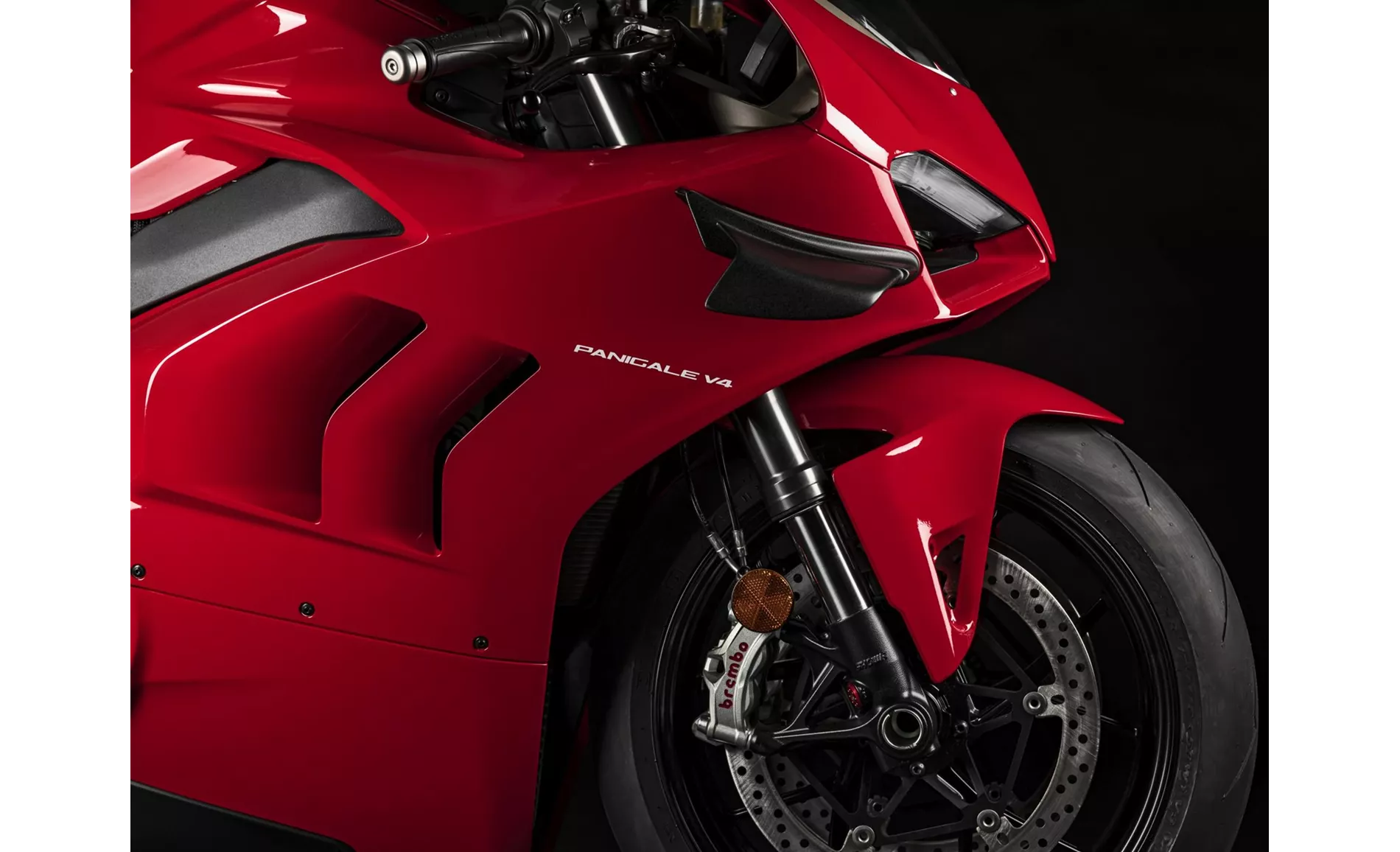
Ducati Panigale V4 2020
In terms of dimensions and weights, the Hayabusa 2022 has a front tire width of 120 mm and a rear tire width of 190 mm, both with a diameter of 17 inches. The wheelbase measures 1480 mm, and the seat height is 800 mm. The kerb weight, including ABS, is 264 kg, and the fuel tank capacity is 20 liters. The Panigale V4 2020 has the same front tire width and diameter as the Hayabusa 2022, but a slightly wider rear tire width of 200 mm. The wheelbase measures 1469 mm, and the seat height is 830 mm. The kerb weight, including ABS, is significantly lighter at 198 kg, and the fuel tank capacity is 16 liters.
In terms of equipment, both motorcycles feature LED headlights.
In summary, the Suzuki GSX 1300 R Hayabusa 2022 excels in terms of its powerful engine, comfortable seating position, advanced electronics package, stable brakes, and mature chassis. However, it is on the heavier side and may not appeal to those who are not fond of its aesthetics. On the other hand, the Ducati Panigale V4 2020 offers clever electronics, noticeable upgrades from the previous model, and improved accessibility. However, it has a smaller fuel tank from an ergonomic standpoint and may have limitations in wet conditions at high speeds.
Technical Specifications Suzuki GSX 1300 R Hayabusa 2022 compared to Ducati Panigale V4 2020
Pros and Cons in comparison
Pros and Cons in comparison
Suzuki GSX 1300 R Hayabusa 2022
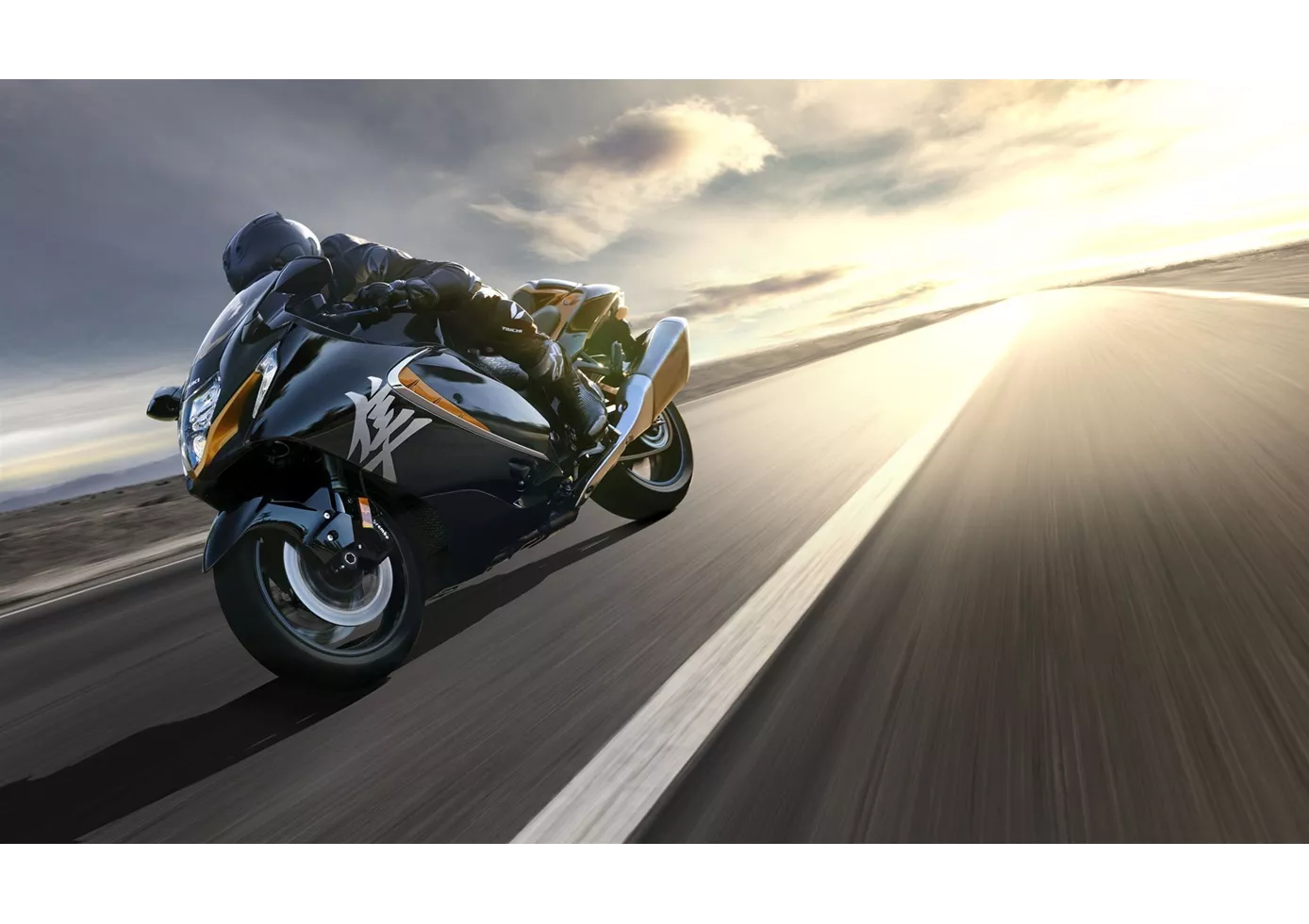
Hayabusa je absolutní legenda, první sériový motocykl, který se rozjel na více než 300 km/h, nelze považovat za zanedbatelnou záležitost. S novou Busou však Suzuki rozpoznala znamení doby. Současný model s rozsáhlou elektronickou výbavou včetně tempomatu ve standardní výbavě je vynikajícím hyper-tourerem. Ergonomie je stále sportovně orientovaná, ale jezdec sedí dobře integrovaný ve stroji, a tak se těší i dobré ochraně proti větru. Brzdy jsou stabilní, jízdní vlastnosti jsou dobré a podvozek je úžasně stabilní a vyspělý. Třešničkou na dortu je samozřejmě obrovský řadový čtyřválcový motor o objemu 1340 cm3 , který ohromuje už jen svým výkonem 190 koní. Ještě lepší je však maximální točivý moment 150 newtonmetrů, který je pocitově k dispozici již od volnoběžných otáček. Z hlediska suverenity je tento motor těžko překonatelný!
Ducati Panigale V4 2020
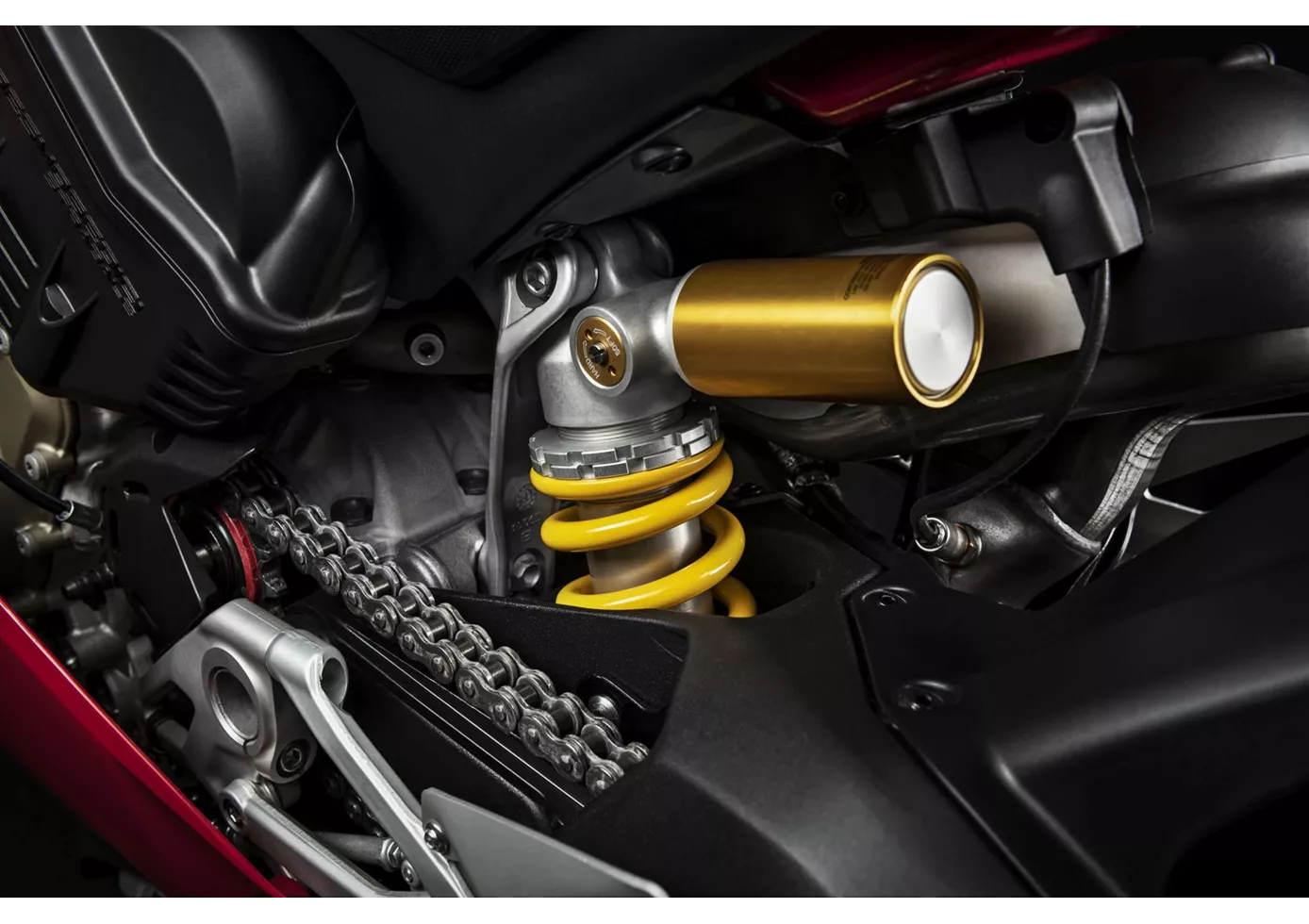
Závěr je pro mě velmi snadný. Ducati vylepšila "už tak téměř dokonalý motocykl", aniž by cokoli změnila v negativním smyslu. Ačkoli jízda na silnici s touto radikální kapotáží pravděpodobně vyvolá rozruch a jednomu či dvěma jezdcům se zdá nepohodlná, na závodním okruhu se s ní zřejmě cítí pohodlněji. "Z krabice" dostanete motocykl, který se více než kdy jindy podobá motocyklu mistrovství světa Superbike. Také věřím, že majitel V4 2018 je docela dobře schopen zlepšit své časy na kolo s verzí 2020. Můj tip: pokud si dáte záležet na zvětšení nádrže nebo na její větší přilnavosti, mohli byste s korbou ještě více přejet střed.
Price Comparison Avarage Market Price Suzuki GSX 1300 R Hayabusa vs Ducati Panigale V4
There are a few key differences between a Suzuki GSX 1300 R Hayabusa 2022 and a Ducati Panigale V4 2020. In terms of price, the actual average price of a Ducati Panigale V4 2020 is about 124% higher. Compared to Ducati Panigale V4 2020 there are more Suzuki GSX 1300 R Hayabusa 2022 bikes available on the 1000PS.de Marketplace, specifically 12 compared to 6. It takes less time to sell a Ducati Panigale V4 with 100 days compared to 136 days for the Suzuki GSX 1300 R Hayabusa. Since model year 2005 1000PS.de editors have written 24 reviews for the Suzuki GSX 1300 R Hayabusa and 18 reviews for the Ducati Panigale V4 since model year 2018. The first review for the Suzuki GSX 1300 R Hayabusa was published on 7/10/2007 and now has more than 10,000 views. This compares to more than 131,500 views for the first review on Ducati Panigale V4 published on 11/5/2017.
